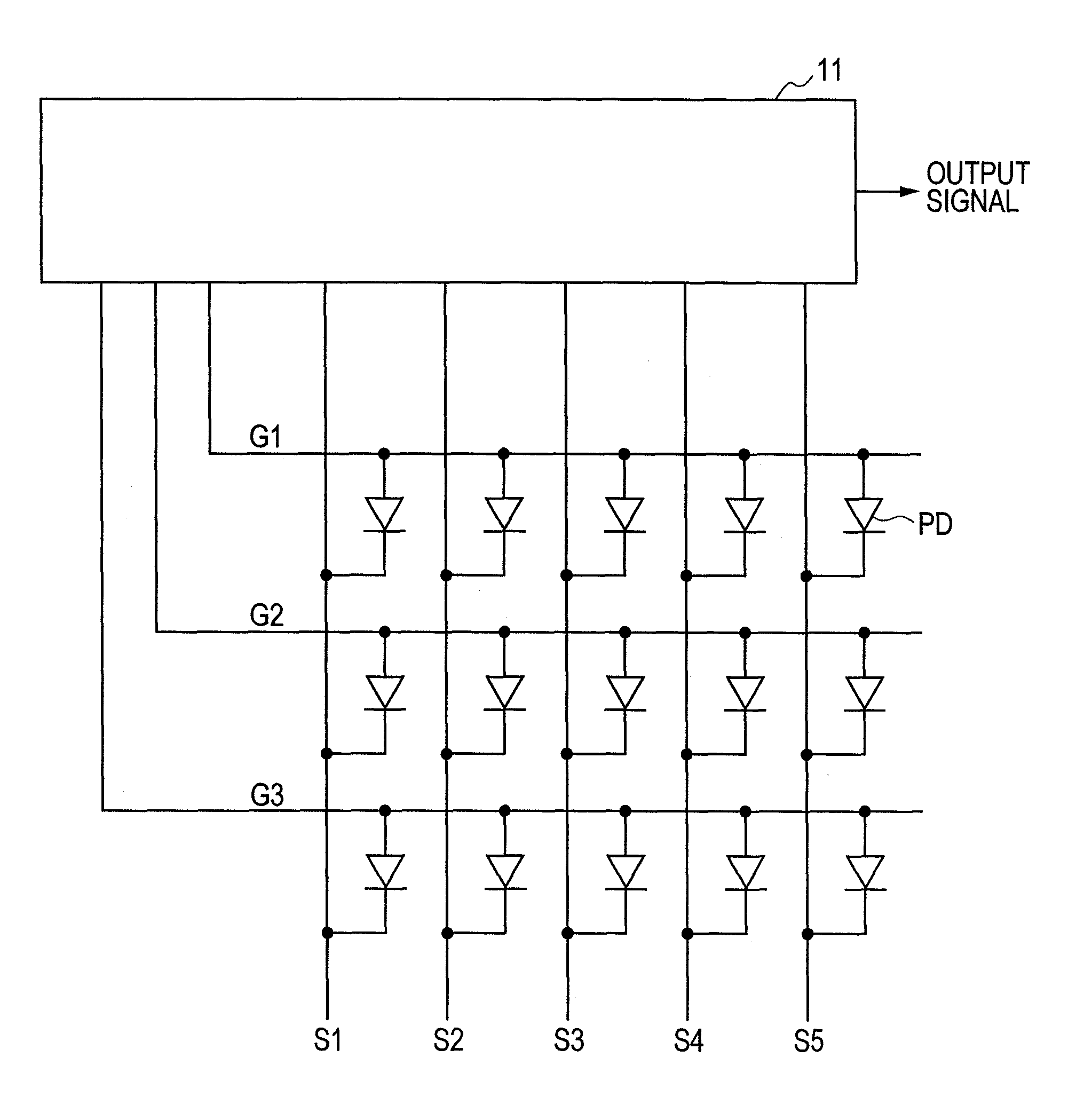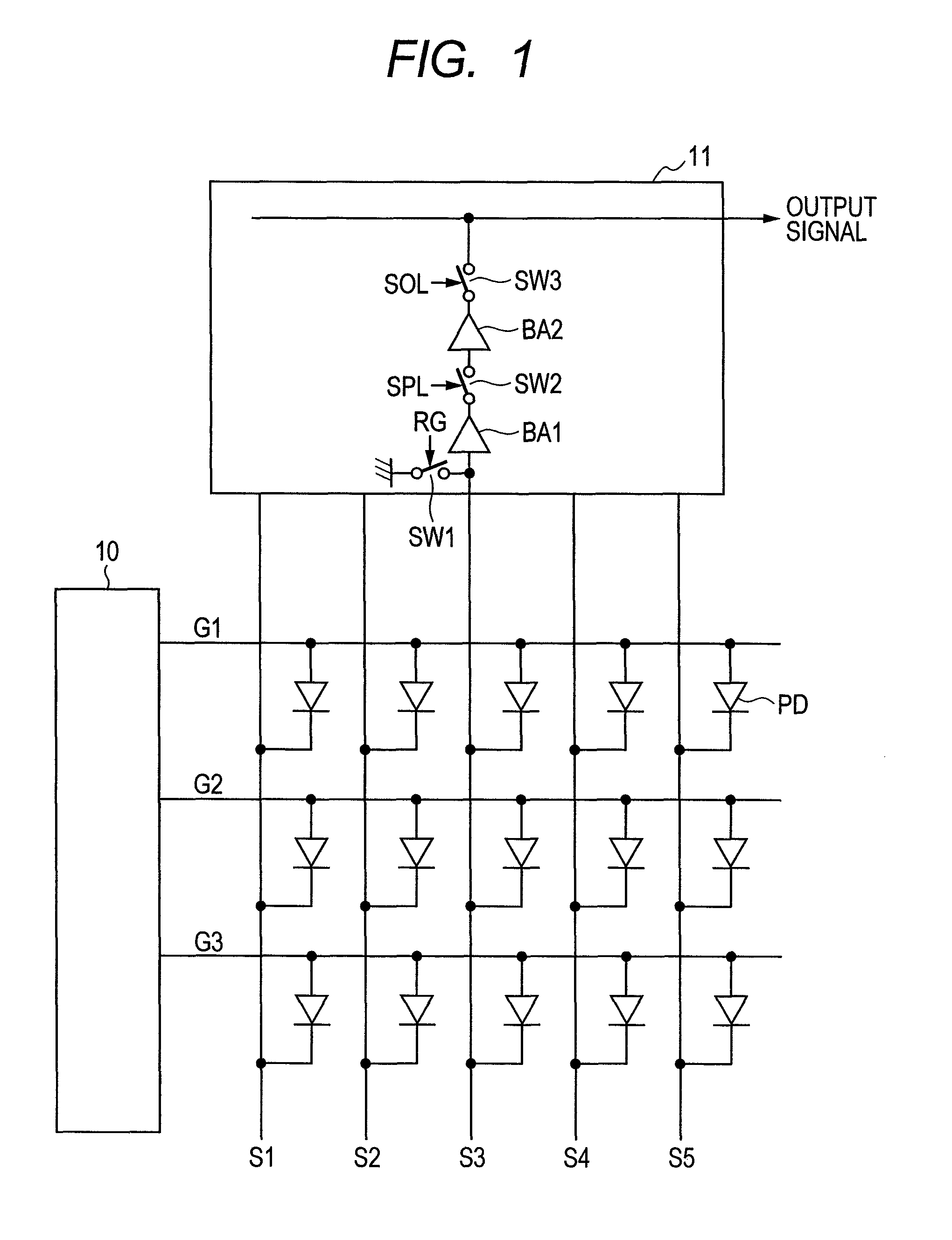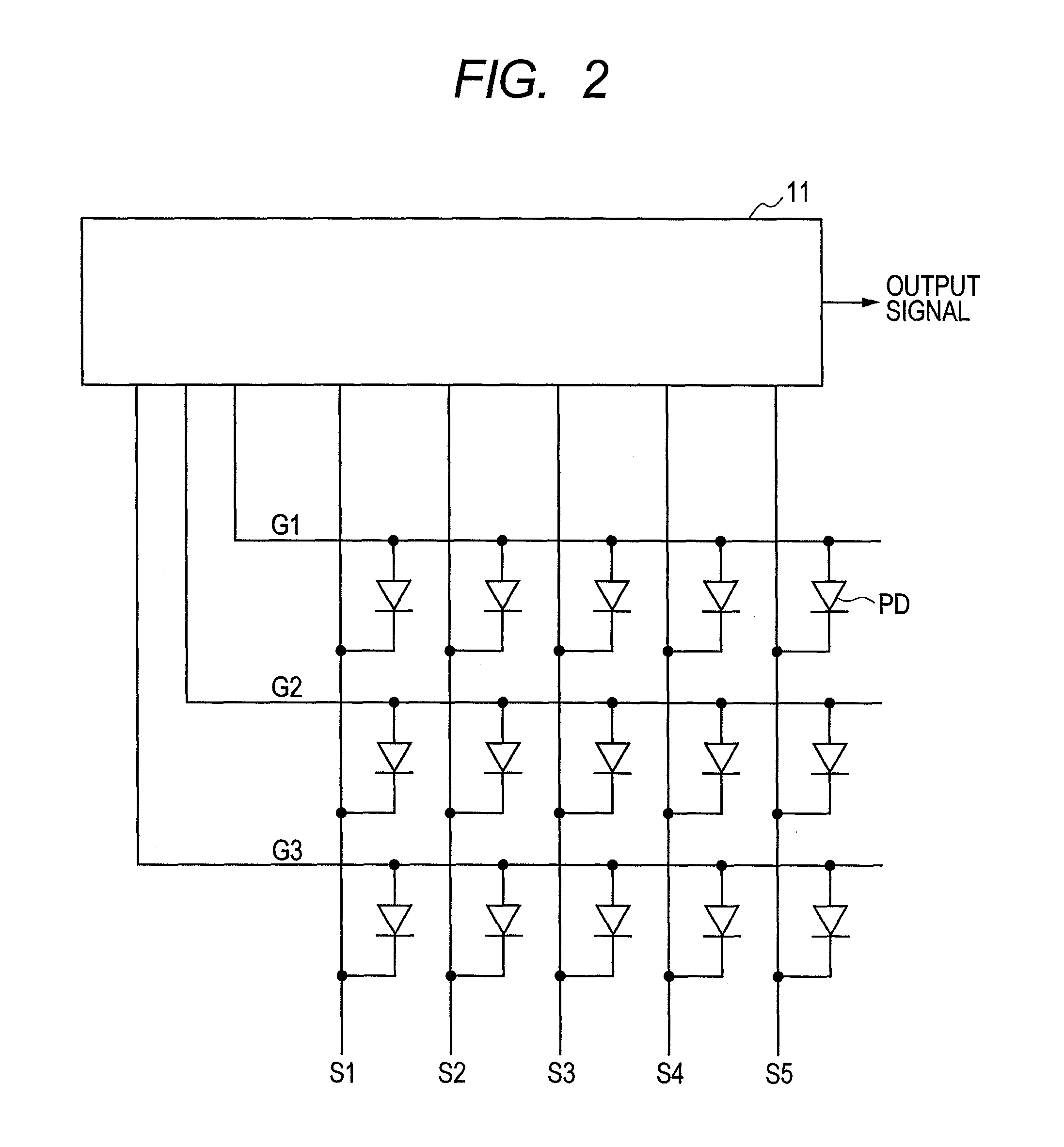Photosensor device
a technology of photosensors and sensors, applied in the field of photosensor devices, can solve the problems of poor sensitivity, high cost, and extremely high cost, and achieve the effect of low voltage and simple structur
- Summary
- Abstract
- Description
- Claims
- Application Information
AI Technical Summary
Benefits of technology
Problems solved by technology
Method used
Image
Examples
first embodiment
[First Embodiment]
[0028]FIG. 1 is a circuit diagram for showing a circuit configuration of a photosensor device according to a first embodiment of the present invention.
[0029]As shown in FIG. 1, the photosensor device of the embodiment includes a diode matrix array in which plural photodiodes PD are arranged in a matrix shape and which configures a light receiving surface, plural scanning lines (G1, G2, G3, . . . ) which are coupled to anodes of the photodiodes PD in the respective lines of the photodiode array, plural read lines (S1, S2, S3, S4, S5, . . . ) which are coupled to cathodes of the photodiodes PD in the respective columns of the photodiode array, a vertical gate driver 10 which is coupled to the respective scanning lines (G1, G2, G3, . . . ) and sequentially selects the scanning lines (G1, G2, G3, . . . ) in each horizontal scanning period, and a signal processing circuit 11 which is coupled to the respective read lines (S1, S2, S3, S4, S5, . . . ) and loads each voltag...
second embodiment
[Second Embodiment]
[0044]FIG. 4 is a circuit diagram for showing a circuit configuration of a photosensor device according to a second embodiment of the present invention.
[0045]In the embodiment, the polarities of the photodiodes PD in the first embodiment are inversed. In this case, the polarities of the driving voltage and the signal voltage are also inversed.
[0046]Specifically, when the signal RG becomes the H-level and the switch circuit SW1 in the signal processing circuit 11 are turned on in a blanking period of one horizontal scanning period HSYNC, each of the read lines (S1, S2, S3, S4, S5, . . . ) is adjusted to, for example, electric potential at the H-level in a driving method of the photosensor device of the embodiment.
[0047]Further, during a period when the signal RG is at the H-level, each voltage level of the scanning lines (G1, G2, G3, . . . ) becomes the H-level. When the signal RG becomes the L-level, each voltage level of the scanning lines (G1, G2, G3, . . . ) be...
third embodiment
[Third Embodiment]
[0051]FIG. 5 is a timing view for explaining a driving method of a photosensor device according to a third embodiment of the present invention.
[0052]In the embodiment, the sensitivity varies by changing the selection period (the H-level period inFIG. 3) of each of the scanning lines (G1, G2, G3, . . . ) in the first embodiment.
[0053]It should be noted that only the scanning line G1 is illustrated in FIG. 5. However, the same is true for the other scanning lines. Further, the signal RG used to reset each voltage of the read lines (S1, S2, S3, S4, S5, . . . ) and the signal SPL used to load a signal are the same as those in the first embodiment.
[0054]In a period 1 of FIG. 5, the H-level period of the scanning line G1 corresponds to one horizontal scanning period HSYNC, and the rising time of each electric potential of the read lines (S1, S2, S3, S4, S5, . . . ) is longest. Therefore, the signal voltage loaded to the signal processing circuit 11 becomes highest, resul...
PUM
 Login to View More
Login to View More Abstract
Description
Claims
Application Information
 Login to View More
Login to View More - R&D
- Intellectual Property
- Life Sciences
- Materials
- Tech Scout
- Unparalleled Data Quality
- Higher Quality Content
- 60% Fewer Hallucinations
Browse by: Latest US Patents, China's latest patents, Technical Efficacy Thesaurus, Application Domain, Technology Topic, Popular Technical Reports.
© 2025 PatSnap. All rights reserved.Legal|Privacy policy|Modern Slavery Act Transparency Statement|Sitemap|About US| Contact US: help@patsnap.com



